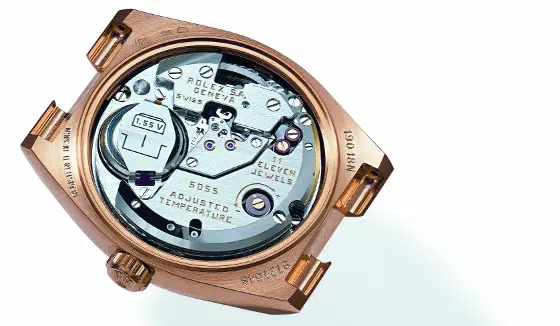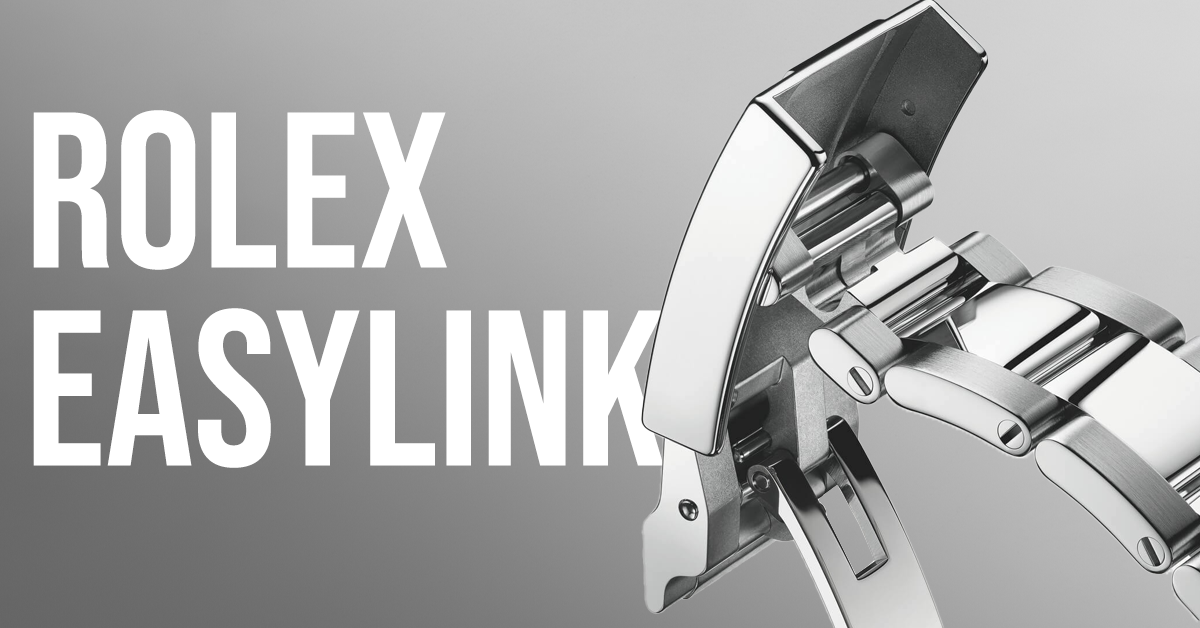
Ronald Reagan’s Watch: The Hidden Story Behind His Presidential Timepiece (2025 Review)
Ronald Reagan’s watch choice reveals a fascinating story about presidential style and tradition. During his time as the 40th President, Reagan wore a steel
Most Rolex watches don’t have batteries. A look at Rolex’s impressive collection shows that mechanical and automatic movements power these timepieces instead of batteries. The Oysterquartz stands alone as the only Rolex model that needed a battery.
Rolex launched the Oysterquartz in 1977 to address the Quartz Crisis. The company made about 24,000 Oysterquartz watches until production stopped in 2001. These watches became collector’s items despite being among Rolex’s most affordable pieces. The rest of Rolex’s watches use the company’s groundbreaking Perpetual rotor system. This innovation came to life in 1931 as the world’s first self-winding mechanism that uses energy from your wrist’s natural movement. The green design helps mechanical Rolex watches run for decades with proper maintenance, unlike battery-powered watches that need new batteries every 2-5 years.
Most Rolex watches don’t have batteries. The brand’s rich history shows that almost all their timepieces have worked without conventional batteries. This reflects the brand’s lasting commitment to traditional watchmaking craftsmanship and state-of-the-art engineering.
Rolex has built its reputation on mechanical movement excellence. The company focuses on perfecting self-winding automatic mechanisms instead of battery power. They believe true luxury timepieces should rely on mechanical ingenuity to keep time.
The life-blood of Rolex’s power system lies in their revolutionary Perpetual rotor technology. This self-winding mechanism changed how Rolex watches generate and store energy after its introduction in 1931. The majority of Rolex timepieces employ mechanical movements that draw power from your wrist’s natural motion rather than batteries.
Rolex stands out in the luxury watch industry for its steadfast dedication to mechanical movements. Famous models like the Datejust, Submariner, GMT-Master II, and Oyster Perpetual all run on sophisticated mechanical systems. On top of that, this commitment to battery-free operation has become one of the brand’s defining features.
Rolex made one notable exception to their mechanical focus: the Rolex Oysterquartz. This model stands as the brand’s only venture into battery-powered timepieces.
The Oysterquartz emerged as a response to the “Quartz Crisis” of the 1970s. Japanese watchmakers flooded the market with affordable yet accurate quartz watches during this period. This technological shift threatened the Swiss watchmaking industry and forced prestigious brands like Rolex to adapt.
Rolex released its first quartz timepiece in 1970 – the limited-series Date 5100 with the Beta 21 movement. The company spent five years developing their own in-house quartz movements. They introduced two proprietary quartz calibers by 1977:
The Oysterquartz featured distinct characteristics that made it different from traditional Rolex designs. Its angular case and integrated bracelet reflected the 1970s esthetic trends. The watch managed to keep Rolex’s high standards for quality and precision, though it needed a battery replacement every three to five years.
Rolex stopped making the Oysterquartz in 2001. The company made fewer than 25,000 Oysterquartz watches during its 25-year production run. These rare pieces represent a fascinating chapter in Rolex’s history as the only battery-powered model that ever spread from their workshops.

Rolex watches work with an amazing mechanism that stands as one of horology’s most important breakthroughs. These timepieces don’t need batteries – they run on a sophisticated mechanical system that turns your natural movement into power.
Every modern Rolex watch has a Perpetual rotor at its core. This groundbreaking invention, which Rolex patented in 1931, changed watchmaking forever. The half-moon-shaped component spins freely both ways, powered by Earth’s gravity as you move your wrist. Your wrist’s slightest movement makes this oscillating weight rotate and creates kinetic energy to power the watch.
The Perpetual rotor brings three big advantages over traditional watches. You don’t need to wind it daily. The mainspring stays at perfect tension for better accuracy. The watch’s water resistance improves because the crown stays screwed down most of the time.
Rolex’s engineers make the oscillating weight as heavy as possible to work efficiently. They use tungsten alloy to get excellent dynamic properties from such a small part. The design places the weight’s center of gravity perfectly to capture maximum motion, whatever you’re doing – from jogging to sitting at your desk all day.
The mainspring acts as the main power storage in a Rolex’s mechanical heart. This tightly wound special metal strip stores energy inside a cylindrical part called the mainspring barrel. The Perpetual rotor keeps winding this spring while you wear your watch, maintaining steady tension.
The stored energy releases gradually through a precisely engineered system. The mainspring unwinds slowly and releases power through the barrel’s teeth to drive the wheel train. This controlled energy transfer powers the balance wheel oscillations that divide time into equal segments for accurate timekeeping.
The mainspring barrel has several crucial parts:
A clutch system kicks in automatically when the mainspring hits maximum tension to prevent overwinding damage. This smart safety feature keeps your Rolex reliable even during high activity periods.
Most Rolex watches let you wind them manually when needed. This comes in handy when your watch stops after sitting unused longer than its power reserve – usually 48-70 hours depending on the model.
Here’s how to manually wind your Rolex:
A completely unwound watch needs about 20 full turns before it starts ticking again. A slip gear mechanism protects your fully wound Rolex from over-winding damage.
Daily wear with enough movement makes manual winding unnecessary. Many Rolex owners never need to wind their watches by hand. Your movement will last longer if you avoid daily hand-winding when your watch is already fully wound.
Rolex’s extensive catalog spans decades of production, yet the Oysterquartz remains their only model that ever needed a battery. This remarkable timepiece shows the turbulent era in watchmaking history when traditional mechanical watches faced a serious threat from emerging technology.

The “Quartz Crisis” (or “Quartz Revolution,” depending on your point of view) hit the watchmaking industry in the 1970s and early 1980s. Seiko sparked this massive change in December 1969 by introducing the Astron, the world’s first quartz watch. These quartz timepieces delivered better accuracy than mechanical watches and cost much less.
The Swiss watch industry suffered devastating losses as Japanese and American manufacturers flooded markets with affordable quartz watches. Swiss watchmakers dropped from 1,600 to 600 between 1970 and 1983. Swiss watch industry jobs plummeted from 90,000 to 28,000 between 1970 and 1988.
Many people don’t know that Rolex pioneered quartz technology among Swiss manufacturers. The company’s first patent for an electro-mechanical watch came as early as 1952, and they earned 21 quartz-related patents between 1960 and 1990.
Rolex’s original approach involved joining other Swiss brands in the Center Electronique Horloger (CEH) to develop quartz technology. They released their first quartz watch – the limited-series Date 5100 with the Beta 21 movement. The company left CEH in 1972 to create their own quartz movements.
Rolex launched their in-house quartz movements in 1977 after five years of development. They created two distinct calibers:
These movements showcased several impressive technical features:
These calibers achieved remarkable accuracy. COSC certification required quartz movements to maintain precision within ±0.2 seconds per day. The Oysterquartz movements performed even better, with variation of less than one second per week.
The early Caliber 5035 movements (Mark I) didn’t receive COSC certification. This explains why Oysterquartz models from 1977-1978 don’t have “Superlative Chronometer” on their dials. Mark II movements earned certification after the tuning fork crystal modification, and later models displayed the chronometer designation.
An Oysterquartz battery typically lasts two to three years, though some owners report up to five years of life. The replacement process requires careful attention to detail.
Rolex USA used to offer free battery replacement service, which included new gaskets and pressure testing. Today’s professionals recommend having a qualified watchmaker handle this service instead of attempting it yourself. The delicate quartz movement can suffer damage easily.
Rolex suggests servicing every five years for all their watches. The Oysterquartz proves more resilient, needing full service only every ten to twelve years. These collector pieces deserve special care, given their scarcity – Rolex made fewer than 25,000 Oysterquartz watches during the 25-year production run that ended in 2001.
Buyers choosing between mechanical and quartz Rolex watches should learn about their key differences. These differences help match the right movement to your lifestyle and what matters most to you. The choice goes beyond just how they’re powered – it affects accuracy, upkeep, craftsmanship, and future value.
The most precise mechanical Rolex watches—all COSC-certified chronometers—drift between -4 to +6 seconds daily. High-quality quartz movements in the Oysterquartz perform better, staying accurate within seconds per week. This is the biggest difference between these two technologies.
Mechanical Rolex watches need service every 3-7 years. Each service involves taking apart the watch, cleaning it, adding lubricant, and adjusting it—usually costing $500-$2000. Quartz watches are simpler to maintain. They just need new batteries every 2-5 years and occasional checks of their seals and moisture resistance.
A mechanical Rolex’s maintenance might cost between $4,500-$8,800 over 30 years. Quartz watches cost much less to maintain since they mainly need battery changes and basic checks.
Mechanical Rolex movements showcase watchmaking at its finest with hundreds of perfectly fitted parts. These complex systems create that smooth “sweeping” second hand movement that mechanical watches are known for, unlike quartz models’ once-per-second tick.
Mechanical watches create a special bond with their owners. They respond to your movements and need regular attention. Watch experts often call them “machines with a heartbeat”. This personal connection makes many enthusiasts love their watches even more.
Quartz watches excel at convenience. They stay accurate even when you don’t wear them and need minimal care.
We see mechanical Rolex watches holding their value better than quartz models because of their craftsmanship and heritage. Collectors love these timepieces for their centuries-old traditions and engineering excellence.
The Oysterquartz tells an interesting story. Collectors once ignored these watches in favor of mechanical models. Now these rare pieces (fewer than 25,000 that ever spread) are gaining value. Vintage Oysterquartz prices keep rising as collectors recognize their place in history during the quartz revolution.
Mechanical watches work best for people who value tradition, craftsmanship, and investment potential. The Oysterquartz is a chance to own a piece of history that offers better accuracy for those who put performance first.
Vintage Rolex watches, just like their modern versions, rarely need batteries. Rolex has kept its dedication to mechanical excellence throughout its history.
Rolex produced timepieces with different movement types over the years, including traditional hand-wound movements. The vintage Cellini line featured classic hand-wound mechanisms, while many other historical models used self-winding technology. To cite an instance, the Rolex Caliber 1600—a flagship mechanical movement from the late 1960s and early 1970s—powered vintage Datejust and Day-Date models. These mechanical marvels stay accurate without batteries, showing Rolex’s commitment to battery-free watchmaking through time.
Proper maintenance remains vital for vintage Rolex timepieces. Service recommendations have changed over decades of production:
Mechanical watches need regular servicing because lubricants break down eventually. When these specialized oils deteriorate, increased friction stresses the components and performance suffers. Proper servicing is vital to protect both function and value under these conditions.
Several indicators signal maintenance needs for vintage Rolex owners. You should wind older Rolex models manually at least once or twice monthly, even with daily wear, since aging lubricating oils may diminish. Watch for these warning signs before service:
Professional servicing combines complete disassembly, ultrasonic cleaning, precision lubrication, and critical part replacement when needed. Regular winding and proper servicing together help your vintage Rolex maintain its value and performance.
Rolex’s remarkable story shows the brand’s steadfast dedication to mechanical excellence over battery power. Almost every Rolex watch runs without batteries and uses the innovative Perpetual rotor system that turns your natural wrist movements into lasting energy. The Oysterquartz stands as all but one of these timepieces – a fascinating response to the quartz revolution that shook traditional watchmaking in the 1970s.
The choice between mechanical and quartz Rolex models goes beyond just power sources. Mechanical timepieces showcase unmatched craftsmanship, heritage value, and that distinctive sweeping second hand. They do need more maintenance though. The rare Oysterquartz delivers better accuracy and historical significance, which makes collectors want it more and more, even with its battery dependence.
Your Rolex needs proper care, whatever type you wear. Mechanical models work best with regular wear and occasional manual winding. All watches need service at the right intervals – modern ones typically every 10 years, while vintage pieces might need more frequent attention. These practices help your Rolex keep its accuracy and value for decades.
The way Rolex’s power systems work helps us appreciate these horological masterpieces even more. The brand’s focus on perfecting self-winding mechanisms instead of following the trend toward battery power shows their steadfast dedication to traditional watchmaking excellence. This philosophy is without doubt at the heart of what makes a Rolex truly special – a sophisticated mechanical marvel that marks time with you for generations.
Most Rolex watches do not use batteries. They are powered by mechanical movements that utilize a self-winding mechanism or manual winding. The only exception was the Oysterquartz model, produced from 1977 to 2001, which used a battery-powered quartz movement.
Rolex watches typically use a self-winding mechanism called the Perpetual rotor. This system harnesses the natural motion of the wearer’s wrist to wind the mainspring, which stores energy to power the watch. The energy is then released slowly through a series of gears to keep accurate time.
A fully wound Rolex watch can typically run for 48 to 70 hours without being worn, depending on the specific model. This is known as the power reserve. If the watch stops, it can be manually wound or gently shaken to restart the self-winding mechanism.

Ronald Reagan’s watch choice reveals a fascinating story about presidential style and tradition. During his time as the 40th President, Reagan wore a steel

Elon Musk’s watch collection mirrors state-of-the-art technology and understated luxury, just like the man himself. The world’s richest person, worth $146 billion, doesn’t always choose

What is Rolex Easylink? Rolex Easylink is a patented micro-adjustment system that lets you fine-tune your bracelet length by exactly 5mm without any tools. This